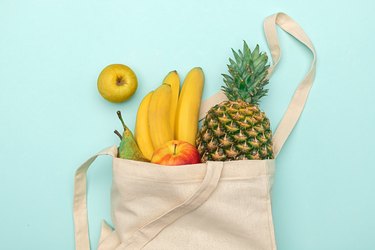
There's nothing quite like biting into a perfectly ripe peach, a delightfully plump cherry tomato or a honey-sweet melon with just enough juice. Those can be fairly routine moments for the few people fortunate enough to have a good garden or fruit trees, but the rest of us have to rely on whatever we can find at the store or farmers market.
The pursuit of deliciousness might leave you with a few questions, such as "How can I tell when fruit is ripe?" and "How do I make produce last longer?" Luckily, with a few simple tricks and some insight into the wonderful world of produce, anyone can quickly learn how to select and look after their favorite fresh fare.
Video of the Day
Video of the Day
A Quick Science Lesson on Fruits...
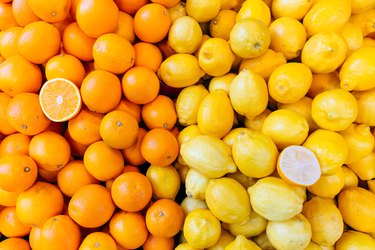
Our ancestors would be shocked at the sheer variety of fruit available to us at supermarkets, but those big mounds of beautiful-looking fruit are sometimes underwhelming in practice. That's because they need to survive extended shipping and storage to make it from where they're grown to where they're sold and remain in salable condition. The simple truth is this: Fully ripened fruit is perishable and rather delicate, so most of what you see at the store was picked while slightly unripe and then ripened as needed upon reaching distribution centers.
That's due to a little trick that many fruits play naturally: When it's time for them to ripen, they produce ethylene gas. This triggers the development of pigments (yielding color changes), sweetness (due to fructose, glucose and other natural sugars) and the soft, lush juiciness we associate with ripe fruit. Of course, like many other natural processes, ethylene production is variable and unreliable, so fruit producers and distributors have learned to fake it. They simply expose fruit in distribution centers to ethylene gas (or substances that trigger a similar effect). The fruit ripens, its shelf life isn't an issue and everybody's happy.
You've probably even done a version of this at home. Keeping fruit in a paper bag for a day or two to ripen, often with a banana or apple for a buddy, employs the same principle. The paper bag traps whatever ethylene the fruit produces, helping speed ripening. Apples and bananas, meanwhile, boost the concentration of ethylene because they generate a lot of it, so they'll contribute to ripening other fruits that might not put out quite as much.
Climacteric Vs. Non-Climacteric Fruit
So enjoying ripe fruit is just as simple as putting it in a bag with an apple, right? Sadly, no. Not all fruits ripen after they’re picked or rely on an ethylene-triggered mechanism for ripeness. Botanists refer to fruits that ripen after picking as climacteric and those that don’t as non-climacteric.
Here are some popular fruits from each category:
Climacteric: Plums, apples, pears, kiwis, stone fruit (such as peaches, apricots or nectarines), papaya, persimmons, avocados, mangoes, cantaloupe and honeydew melons.
Non-Climacteric: Grapes, cherries, citrus fruit, most berries, pineapple, watermelon and pomegranate.
You might question why pineapples are considered non-climacteric if they’ll continue to soften and become aromatic as they sit on your counter. It’s because their natural sugar levels don’t increase, which is how ripening is defined. As natural enzymes begin to break down cell walls, the pineapple will become softer and juicier, and it may be more pleasant to eat (up to a point), but that’s not the same thing. You’ll find this with a few other fruits, as well.
Part 1: How to Choose Ripe Fruit
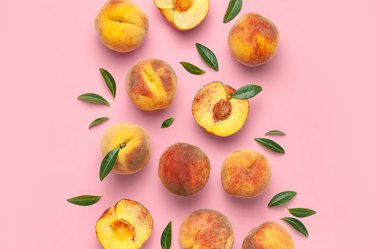
1. Start with the obvious
So you're at the grocery store, facing pyramids of fruit, and you want to take home the best. How do you know what's ripe? Well, bananas and plantains are easy. The unripe fruit are chlorophyll-green, and they progress through yellow and speckled to mostly brown as they ripen. It's simply a question of choosing which ripeness level you prefer. Most fruits aren't that obliging, though, so you'll need to rely on other signs.
2. Use your sense of smell
In many cases, your nose knows best. Whether you're comparing cantaloupes or pineapples or peaches, a fruit that doesn't smell like much of anything probably won't taste like much of anything, either. Melon should have a slightly musky scent, pineapple should be aromatic and sweet-smelling and so on. This method isn't universal—it's not always useful with apples or grapes, for example—but it's a good starting point.
3. Look for visual cues
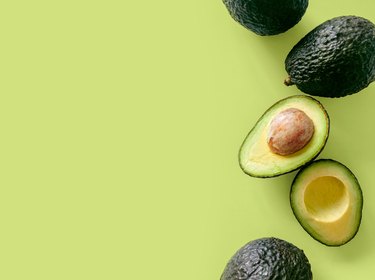
Hass avocados darken as they ripen, and color is an important cue in blueberries (dark blue to purple, no pink or red), blackberries (no red or pink patches), raspberries (no green or pale patches) and strawberries (all red with no white or green areas at the "shoulders"). Oranges might be pale if underripe or even have a green tinge. Most fruit should be plump and glossy with unmarred skins. Fruit that's shriveled or leathery is almost always overripe and should be skipped.
Mini Guide: Signs Fruit Is Ripe
- How to tell if avocados are ripe: The fleshy area under an avocado’s stem should have the classic yellow-green color when the stem is removed. If it’s brown or black, it’s already overripe. If it’s pale, the avocado isn’t ready.
- How to tell if pears and melon are ripe: Pears and melons should have a bit of give at the stem end.
- How to tell if watermelon is ripe: The pale patch on the underside of a watermelon should be yellow (not pale or white) once fully ripened, and some folks believe they can judge ripeness by the sound a melon makes when tapped, but neither of these methods is entirely reliable.
- How to tell if pineapple is ripe: If you’re uncertain about a pineapple, look at its leaves. They should still be green (brown or yellowing indicates a fruit past its prime), but you should be able to tug a leaf from the center of the cluster with a relatively gentle tug. If leaves are firmly attached, the pineapple is likely underripe.
4. Squeeze away
Finally, your hands can often help you find the best fruit. Perfectly ripe specimens are heavy for their size, because they're at their juicy peak and haven't lost moisture through respiration. Many fruits also soften as they ripen, so kiwis, peaches, avocados and many others will have just a slight amount of "give" when you gently squeeze them. If they're outright soft, they're probably overripe or bruised from too many other shoppers squeezing them before you.
Tip
It’s often better to choose fruits that are slightly underripe, then ripen them at home to enjoy as soon as they reach their peak. This is especially true for bananas, pears and avocados.
Part 2: How to Store Fresh Fruit
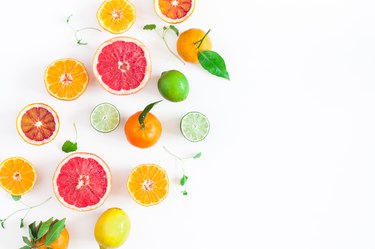
1. Refrigerate non-climacteric fruits
Fruits that won't ripen post-harvest should be refrigerated. If left unrefrigerated, they'll spoil and their usable life will be unnecessarily brief. Most fruits—such as avocados—can be refrigerated once they've reached their peak. This even applies to bananas! Their skins will darken, but the fruit inside will keep just fine.
Tip
One exception to the "refrigerate non-climacteric fruit" rule is the tomato (which, yes, is a fruit): Refrigeration will keep tomatoes from ripening, but it will also suppress flavor compounds even in fully ripened tomatoes.
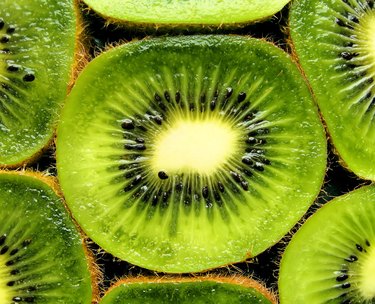
2. Store climacteric fruits at room temperature
Alternatively, fresh fruits that continue to ripen should, generally, be stored at room temperature. However, all fruit should be refrigerated once it has been cut, peeled, cooked or otherwise processed, because at that point it can only spoil, not ripen.
3. Separate ethylene-rich fruits
Because of their production of ethylene, the same apples and bananas that aid ripening will also speed spoilage. Once ripe, keep ethylene-rich fruits (apples, pears, stone fruit, melons, kiwis) away from each other. Many veggies (such as carrots, cucumbers, leafy greens, broccoli, cabbage, sweet potatoes and string beans) are also sensitive to ethylene, so be sure to keep fruit in a separate produce drawer, as well.
With just a bit of consideration and a dash of science, you've got all the tools you need to select the perfect pieces of fruit every time. With ripening tips, storage ideas and a toolbox of cues, you'll be overflowing with freshness before you know it.